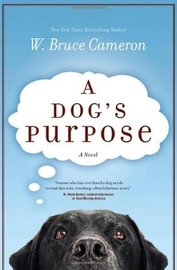 I don’t remember when I first saw the trailer for the movie called “A Dog’s Purpose” which is based on the W. Bruce Cameron book by the same name. It was a couple of months after we had our dog euthanized under traumatic circumstances and I just wasn’t ready for it. I like Dennis Quaid and I’m a sucker for most animal films, but it was just too raw for me. I couldn’t get through the short trailer without losing it and I told myself that I just didn’t know if I could watch the film when it was released. I decided to read the book instead and then decide if I thought I could handle the film. The premise of the book and film is no secret. It tells the story of a dog who is born and then reincarnated a number of times as he finds his “purpose” for existence. For those of you who have not read the book, I will tell you now that it’s not all fluff and the stuff of Disney films of years past. I had a hard time getting past the first incarnation of the dog – who is named Toby – due to the way his part of the story ended. There are some serious issues addressed in the book related to animal shelters and dog breeding and crimes against animals and abuse and neglect. The book is written entirely from the perspective of the dog and I think it is true to the nature of how dogs think, behave and how they view us. Unless you haven’t been paying attention, there was a lot of hullabaloo a couple of weeks before the film was released, thanks to TMZ and PETA. Someone from TMZ released a video clip from the filming of the movie which shows a scared and anxious dog being put into a fast-moving body of water. I won’t belabor that subject here. The vast majority of films which use living animals (as opposed to CGI) are overseen by the American Humane Association. When you watch a movie that says “no animals were harmed in the making of this film,” that is an endorsement by the AHA. The AHA was on set when this particular clip was recorded and the film did, in fact, use CGI for some of the footage. The dog shown in the clip was clearly afraid and traumatized for a period of time; he was not physically injured and the use of him in the film did not stop with the one clip now made famous by the media. There has been a lot of outrage regarding the movie and the clip and some have called for people to boycott the film. If you are of the opinion that the one clip should be used to define not only the film, but the message behind the book and the film, you are entitled to that opinion. I’ve read the producer’s position on what happened and I’m honestly okay with his response. This was an isolated incident in a film which was produced by an animal lover who is probably more mortified and angered by what happened than any of us. Steps are being taken to investigate the incident. I choose to believe that the positive that will come from this is that AHA will be put under more scrutiny in the future and the use of living animals in films for certain scenes will be considered more carefully when the use of CGI will do just fine. This is not the first film in which animals have endured some trauma or died while AHA was on the set. Perhaps it will be the last. I deal with a lot of really serious issues related to animal welfare on my website. I fully acknowledge that some people are outraged about what they saw in the TMZ clip. But my question to them is this: if you are so outraged by what you saw over a period of seconds and which did not lead to physical harm or long-term damage to a single dog, where is your outrage over the other issues addressed in the book and present in our society? Are you outraged about the destruction of healthy and treatable animals in places we call “shelters” using your tax dollars? Are you outraged by the commercial dog breeding industry which enslaves dogs in cages the size of your dish washer for years to be bred over and over again to meet demand for those cute little puppies in a store window? Are you outraged by people who objectify certain breeds of dogs or who keep dogs chained 24/7/365, practically weaponizing them in our communities? I am not being dismissive of what happened when "A Dog’s Purpose" was filmed. I simply ask you to channel your outrage and look at the bigger picture of very important issues in our society which lead to very real neglect, abuse, suffering and yes, death. If you refuse to see the film, that is your choice. But please educate yourself on issues in our society related to companion animals and use some of that passion you feel for some real good. Speak out for what you believe in and make a difference for animals in your community and in our country. There are a lot of people who were outraged by what they saw who are working to save the lives of animals or improve those lives each and every day. Most of them receive no compensation for their efforts other than knowing they are making a difference. It's easy to boycott a film because you are upset. It's harder to put actions behind your values and do something which positively affects the lives of animals. Or saves those lives. If nothing else, please just read the book. (images courtesy of W. Bruce Cameron and A Dog's Purpose Movie website)
12 Comments
 I know that life is short and so I really try to take advantage of every day. Each day is a gift. I try to do a mental reset each morning, let go of past differences and focus on doing something good. But this morning proved again that the way in which you care for your dog makes it really hard for me to stay positive on some days. I know that there are cultural differences when it comes to dogs and how we treat them. Some dogs are family members. Some dogs serve some function or purpose related to security or hunting. Some dogs live outside all the time and are used as a sort of living security system. I heard on a program recently that for some, the attitude is that “animals don't come inside unless they're going on a plate.” As offensive as that statement was to me, I get it. Your dog is your dog and while your treatment of your dog may cause me to lose sleep at night, there is little I can do about it unless you are breaking the law. 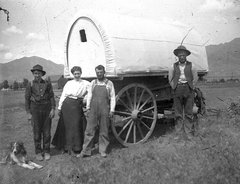 Most cites and counties across the country have laws about dogs running at large. These laws are not about interfering with your personal decisions about how you treat your “property.” They are about public safety. While you may think it is appropriate to let your dog run loose and you may think your dog will not harm or scare anyone, the law in most places makes it illegal to liberate your dog each day to roam the land as if it was still 1870. Not everyone likes dogs and some people are afraid of them. The people most likely to be injured by a dog are children and the elderly. Even if your dog is so incredibly docile that it would never harm or scare a person, your dog is still no match for fast-moving vehicles or even slow-moving drivers who are not paying attention. Beyond the whole injury or death issues, there are financial issues involved. When you allow your dog to run at large, he or she may be picked up by animal control authorities, causing taxpayer dollars to be used to house, feed and then perhaps destroy your dog. If your dog is killed by a vehicle, taxpayer dollars are used for the costs of removing the body of your dog from state and federal roadways and rights-of-way. I understand that dogs get loose and not every dog outside is there due to someone's irresponsibility. If your dog lives outside and is a fence jumper, digger or has the propensity to bolt when a gate is left ajar, I want you to take steps to keep your dog contained. You can use a fence or a run line for this. If you say you cannot afford those items, then bring your dog inside. It's just that simple. Most dogs are easily house trained and in the end, it is up to you to learn your dog's language, teach him to learn yours and give him the structure and exercise he needs. There is talk of doing a round-up of loose dogs in Houston in advance of the Super Bowl. Those dogs are or were someone's pet or were born outside to dogs who were someone's pets. It will be a tragic loss if those dogs are summarily killed just to make the city look better and so the city can say it worked hard to ensure public safety. It should have been addressing the stray dog issue all along and before it got to the point where things got so out of hand. I have the phone numbers for five Department of Transportation Offices on my phone and I had to call one of them again this morning on my way to work. He was in the middle of the road between the 308 and 309 mile markers in the northbound lanes. I came upon him unexpectedly because there was a lot of traffic. It took my breath away to see him. But I made the call. And then I cried for your dog. You will never know what happened to him even though I do. Please. Keep your dogs safe. Not just for public safety purposes. Because you owe it to them to help them live long and full lives. It's not 1870 anymore. (frontier image courtesy of the Utah Historical Society)
I read a lot. I think that in order to be an effective animal welfare advocate, you need to be self-educated. I read a lot of blogs and articles related to animal issues not only to stay informed on what I call animal current events, but just to expand my knowledge base. I do my best to present researched content on my website, but I do not put myself forth as a subject matter expert on any of the topics I cover. I leave that up to my contacts who are much more informed than I could ever hope to be. Some of my reading is of books written by people I consider those subject matter experts. I have a small library made up of my go-to book sources which I find myself going back to again and again, almost like consulting trusted textbooks or treatises. I learned of a new-to-me book recently as a result of a blog I wrote on the topic of animal rescuers who spend thousands (and sometimes hundreds of thousands) of dollars for puppy mill dogs at auctions, outbidding everyone in the tent, while still calling it “rescue.” I do not call it rescue. I call it brokering. In any event, my blog led to a number of comments, some of which were made by my new contact: Becky Monroe. Becky is the author of a wonderful book called “Bark Until Heard: Among the Silenced Dogs I Found My Voice.”  I honesty didn't know what to expect when I began Becky's book. A lot of what I read is heavily based on research and studies and philosophies about different issues. Becky's book is nothing like that at all, but in many ways, it was even better in terms of approach. I felt like I was reading about someone just like me. A lot of what Becky wrote about her struggles and her decisions resonated with me not because we have walked the same path, but because we both became outspoken advocates as the result of a single, life changing event. And I came to realize that when others read the book, they may see themselves in Becky’s words and they may have the courage to consider what they can do as individuals. I highly encourage anyone who considers themselves an animal lover, animal advocate, dog lover or just concerned citizen to read Bark Until Heard. I don't want to spoil the book for you, so I'll sum it up in a few short sentences, with no disrespect intended. The premise is pretty simple: Becky ended up at a puppy mill auction somewhat unexpectedly while doing volunteer work for a national animal welfare organization. She was so overwhelmed by what she saw and heard, she ended up saving a small dog she named Thorp and she was forever changed by the process. The wonderful thing about this book is that it helps us understand the reality of what Becky experienced and how it changed her on a very deep level. It shook up her personal beliefs about what was important to her and about who she was as a person. Becky has not told me as much, but I would guess that if you were to ask her about phases of her life, she would probably define them as “before” and “after” the first dog auction she ever attended. As Becky wrote: I had learned so much about life, and in the process, a metamorphosis had occurred. I was braver., louder, stronger. A single event had changed everything I knew about myself and the world I lived in. I would never be the same and I didn’t want to be. It was freeing to be part of a cause - to fight for something I believed in. The simple beauty of Becky's book is the power which stands behind it and how empowering it can be to others. Not only does the book help people understand the players involved in the dog breeding and auction industries, it also helps people realize that they too can find their voice and they too have the power to help change our society and make it a better place for the dogs we say we love and value. I asked Becky to participate in a Q&A interview with me to help people understand more about her, about how things have changed since she went to her first auction and about what her future may hold. I hope you enjoy her input here and I do hope you will take the time to read her book. It is now a personal favorite of mine. One of the most compelling aspects of your book is what you wrote about how you were completely changed by your experiences. You wrote of wishing you could go back to a time when you did not know things you now know. Have you made complete peace with your new life path? I think I have. Meeting people at book signings, who are inspired to act and to help the dogs, has shown me my mission in life. Sometimes I question why MY heart has to be so fragile for animals, but as I dig deep, I realize that it takes that kind of heart to see the real need - to understand how inhumane the treatment of dogs in puppy mills is. Sure lots of people "don't like it," but they can sleep at night. People like me wake up haunted by the images we have seen and are pushed to act. I can't help but believe that although it can be a very painful, my heart and my ability to communicate with people is MY gift to change things for animals for the better. There are those who have written about auctions in sanitized terms, making it sound as though the dogs are not that bad off or are not handled that poorly. How would you respond to those who paint this more positive picture of the auction scene? Last night Alice, my mill dog from September's auction, was snuggled tight against me in my bed. Her tongue hangs out, she doesn't have many teeth, she suffered untreated chronic dry eye for 5 years and will likely go blind in at least one eye. Emotionally, after 3 months of being in our quiet home, she still runs when someone coughs or drops a pen on the floor. She shakes when new people enter our home. She has a long way to go. But, last night as she found her perfect spot next to me, she made the sigh. That sigh rescuers understand because it seems to signal a moment of peace and comfort for the dogs who have never known it. After she sighed, my mind started to spin with all the Facebook posts from the last Missouri auction. Rescuers reporting, "broken legs, split jaws, infected eyes, prolapsed rectums." One rescuer wrote how there were two pregnant sisters and one made it to rescue and one went to an Amish miller. My eyes flooded with tears picturing the broken dogs and my heart just broke knowing that the other sister didn't get her chance at freedom - she would continue to suffer in the cruel hands of more neglect. I don't know how anyone with a heart could report that there a healthy, happy dogs at an auction. I have never seen it nor have I ever heard anyone who loves dogs say it. The mere thought of auctioning dogs (man's very best friend) as products should make a normal person's stomach turn. You wrote in your book that at the second auction you attended, 50% of the dogs were bought by rescuers and that number was 70% at the third auction. Do you have an opinion on how the presence of rescuers at auction has changed the auction process itself? Aaahhh - the million dollar question, literally. I contemplate this issue A LOT. Nearly a decade ago, when I was attending Amish auctions in northest Wisconsin, we went in with really small budgets attempting to get out the most amount of dogs. We also went in "not as rescue." We tried to just fit in with the crowd. We didn't want them to know who we were. We would wear something subtle and in common, like turtlenecks or ball caps, to help recognize each other as rescues. We never felt welcomed or wanted. We felt like such a small part of the whole operation. It was "their" thing, we were just there trying to save a few dogs. Today the arena has drastically changed. While we might have saved 70% of the dogs, I still don't think we made up 50% of the money exchanged because we bought the cheap dogs - the dogs our small budgets could afford. Yes, once in awhile I can recall a few dogs being rescued for a lot of money. Maybe $700-$1000, but I also recall those dogs vividly. One was an English bulldog in such bad shape. He actually had Band-aids on his body to try and cover his open wounds. I also remember a Shar Pei whose eyes were so infected - her eyelids were inside out. There were probably a few more, but those stuck out and every rescuer in the audience understood getting them out. Even then, the controversy over rescuing was present. There were always protesters outside of the auction and many of them disagreed with us giving a single dollar to the evil people. I remember one of the protesters coming into the barn during auction to get warm (it was -20 outside) and she said to me, "My head is out there and my heart is in here." I guess that is what I would say about the current status of rescues buying at auction. My heart completely understands the desire, the absolute need to want to give the dogs freedom, but my head is starting to question the long term consequences of spending hundreds of thousands of dollars. Truly, rescues are becoming the primary consumers at auctions. When I hear that rescues are spending that kind of money and saying they will spend whatever it takes, I cringe. Simple economics teaches us that this is not the answer. Back when I went to auction, we would get dogs for $25- $50 on average. Yet at that time, I heard that rescues were getting dogs for PENNIES and NICKELS in Iowa and Missouri. This last auction, I heard the prices were astronomical. I can't help but believe rescue is responsible for raising the prices. If I knew that for a million dollars or even more we could buy EVERY SINGLE mill dog and put an end to the wretched industry, I would be on the front-line raising the money. If I knew that it was the end, I wouldn't even care if the millers all retired millionaires, but the reality is buying up all the dogs at auction is NOT ending it, but perpetuating it and increasing the profitability of it. This is not the solution. You wrote in your book about being at an auction and meeting a woman from Florida who said that she decided to attend an auction after reading your book. What is your advice to others like her who feel compelled to see an auction for themselves? Do you think there is a down side to that? I do think people should go to an auction. I think seeing it first hand makes it undeniably real. And while it is unbelievably difficult to experience, I do believe it makes people act and speak out. We need that in this movement. If every person went to an auction and bought a dog, perhaps that would not be the best solution. We would only be adding to the profitability of an industry most of us despise. Yet, seeing hundreds of dogs bought and sold like a commodity, dogs who are sick and scared and unlike dogs most people can relate to, I think could be a priceless answer to the issue. If I am going to believe in the good of humanity, I have to believe that the majority of human beings in America would stand up and scream, if they saw what I have seen. You blogged recently in your Tails and Truths blog about the Amish related to puppy mills. There are those who have suggested that we should actually help Amish dog farmers financially so they can do a better job. How do you respond to that? I would be the last person to suggest helping the Amish do anything. After seeing them in action, I feel no empathy towards them. The way they treat animals is horrific. I also want to take a minute to explain my opinion because I say in that blog that I am content blaming all Amish for puppy mills. I feel this way because no one in their community is speaking out against it. If no one in the community is against it, I must assume they are all okay with it. Being okay with the mass cruelty and neglect of companion animals, is not something I could ever support. I won't buy a single thing made by Amish or Mennonites. In fact, last summer at a farmers market I was about to purchase some tomatoes. The man (who was not Amish) selling them said, "Aren't they spectacular? I get them from an Amish family down the road." I replied, "oh, I apologize, but I don't want them anymore." He looked puzzled and said, "Why?" I said, "Because the Amish have hundreds of puppy mills across the country and I cannot support a group who believes in such cruelty." He then said, "Well, to be honest, the people who grow the tomatoes are Mennonites." I said, "They do it, too." And I walked away. There are a lot of people who will read your book and feel compelled to take some action themselves to find their own voice. What do you think are the most important things individual advocates can do to help bring an end to puppy mills? Are there any things those people should specifically not do? I hope that is what people do after reading the book. I want to inspire everyday people to act on behalf of the silenced animals. I think there are numerous things people can do depending on what they are most comfortable with. I think education and awareness are at the top. Even just sharing the story with friends and family is beneficial. I think writing letters to the editor and writing to legislators is a great way to show support. If someone wants to protest a pet store who sells mass bred dogs, I say do it! I think people willing to bring forth ordinances in their towns, counties, and states to prohibit the sale of mass bred puppies and kittens is a great way to stop the supply and demand. I also believe that volunteering in some capacity with a shelter or rescue is a great way to get involved. We all know that fostering one dog saves the lives of at least 2. I think that getting involved in any part of the animal welfare movement on a local level, will educate people on the realities of not just puppy mills, but of the 2 million adoptable animals killed for space every year. We have got to get more people on board with adopting not shopping in stores or on-line. Two of your dogs came from mills through auctions, Thorp and Penelope. How are both of them doing today? Thorp and Penelope turn 13 and 12 respectively this year. They are doing well, but still bare some scars from years in the mill. Thorp is a certified Therapy Dog and we still work with kids in our community who are emotionally and behaviorally challenged. Thorp is starting to show his age and often takes naps while we visit with the kids on the reading blanket. Penelope has always been resilient. Recently, we fostered and have since failed, another mill dog, Alice. She is a 5 year old Shih Tzu who was bought at an auction in September by a rescue I know. She was one the tougher fosters and so they asked if I would take her. Alice's tongue hangs out of her mouth due to blunt trauma she sustained in the mill. She suffers from neurological deficits. Her dry eye, a common ailment in Shih Tzu, went untreated for all her life, so we are doing everything we can to save her vision now. Beyond her health issues, she, like so many, suffers from such emotional trauma. She is terrified of humans, didn't understand grass or toys or stairs or common noises. She has come far in 3 months, but we have so far to go. However, I am very hopeful that she can be a therapy dog like Thorp, one day. Kids love her and her funny tongue. :) And, most importantly, she has that unbridled kindness and quietness to her. I also think she might just be the inspiration to a follow-up book! When you have book signings or speaking engagements about Bark Until Heard, what surprises you most about the public reaction to your message? I am always blown away when people tell me they "didn't know." They didn't know about puppy mills. They didn't know how cruel the Amish were. They didn't know pet stores were lying about where the puppies come from. On the bright side, it also gives me the greatest hope because I believe the more people who know the truth, the more likely we are to end the cruelty. I know you volunteered in an animal shelter for a number of years and that has shaped how you view the commercial dog breeding industry. My personal opinion is that the commercial breeding of dogs has a direct impact on how many dogs are destroyed in our municipal animal shelters, not because mill dogs enter shelters but because of how many dogs mills produce and public perception about them being superior in some way. Do you think there is a correlation between puppy mills and how many dogs die in shelters? I do believe without a doubt that the commercial breeding industry plays a direct role in the number of dogs killed for space each year. The millions of dogs churned out in mills secure a spot in a home, while the millions of beautiful, adoptable dogs get killed in shelters- never able to get a second chance. Honestly, I don't know what the supply and demand numbers are, but I don't buy into the concept that we need to mass breed dogs in order to meet demand. We need to stop the mass breeding and market the shelter dogs better. We need to educate people on the number of purebreds at any shelter at any given time. We need to teach people about animal adoption. Not nearly enough people know about Petfinder.com or Adoptapet.com. I find that not enough people know there are breed rescues for nearly every breed in every state. Above all else, I think people need to know that AKC papers do NOT in any way guarantee the health or the demeanor of a dog. The AKC is merely a registry. They will register any dog whose breed is accepted by them as long someone is willing to pay the fee. That AKC puppy could be born in a barn with no heat, no A/C, no medical care, no human interaction. The AKC admitted to me that they do not have the resources to inspect every AKC breeder. Do you have any plans for a new book soon? If so, what do you plan to write about? Yes! I have been mulling around a sort of sequel... I never thought Bark Until Heard would remain so relevant 8 years after my initial experience at Amish auctions, but the business of puppy mills and pet stores remains extremely timely. I have grown so much since 2008 and there are so many more organizations and individuals fighting the fight. I believe I would like to re-visit it all and show our progress and our strength. In 2008, I felt so alone and today I am grateful to be surrounded by so many great people wanting to make things better for breeding dogs. (images courtesy of Becky Monroe)
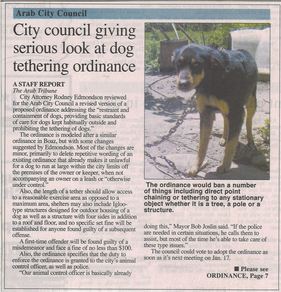 I have been working on advancing a dog ordinance in the city where I live for about a year and a half. It is set on the agenda for the city council meeting next week for a first reading. If all goes as I hope, the ordinance will be adopted later this month or in early February. My pitch to my mayor and city council members for the ordinance covered four points: public safety, animal welfare, property resale potential and community pride. I already have a page on my website about chaining dogs and I have another page about dog aggression, on which I cover the story of a WWII veteran named Donald Thomas who was attacked and killed by two dogs in Leeds, Alabama in September of 2012 when he went to check the mail. Our law firm handled the defense of a civil lawsuit against the City of Leeds. It was truly one of the most tragic and gruesome cases I have ever been involved with in over 20 years as a paralegal. Some push-back I got recently about my dog ordinance from a woman in our city considered an authority on all things animal led me to cover this topic in a blog to help make the case for ordinances like the one I developed. The complete ordinance is found here. The provisions are pretty simple and not at all unreasonable as far as I am concerned. If your dog lives inside, you are free to care for that dog any way you see fit. I would hope your dog is well fed, receives proper veterinary care and is treated as a member of your family. If your dog lives outside, that is another matter entirely. The ordinance sets forth the methods by which a dog who lives perpetually outside may be contained and may not be contained and it sets forth basic standards for housing and care. The state laws in Alabama do not currently define what constitutes shelter, are pretty lax related to what constitutes neglect, abuse and cruelty and do not prohibit direct point chaining or tethering of dogs. While I have every reason to believe a bill will be pre-filed by a state representative any day now which would prohibit chaining and tethering in all of Alabama, I wanted to take steps in my own community to set some basic standards.  So, why is it any business of any government, local or state, how you treat your dog? Here’s why. Public Safety. Your dog may not be dangerous to you, but your dog can be dangerous to other people. Because of the chained dog’s minimal physical space and lack of socialization, these animals often become exceedingly hyper and aggressive. Dogs who are "resident" dogs do not learn to become protective of the people who own them who are living in a house. They learn to become protective of the area in which they are forced to live. The reasons for actual dog attacks (as opposed to incidents of simple and avoidable injuries) are often complex, but the answer to preventing dog attacks is relatively simple: humane care and control of dogs is often all that is needed to prevent most dog attacks. A study by the The Journal of the American Veterinary Medical Association (JAVMA) in 2013 revealed the following statistics related to bite fatalities: no able bodied person being present to intervene (87.1%); the victim having no familiar relationship with the dog(s) (85.2%); the dog(s), owner failing to neuter/spay the dog(s)(84.4%); a victim’s compromised ability, whether based on age or physical condition, to manage their interactions with the dog(s) (77.4%); the owner keeping dog(s) as resident dog(s), rather than as family pet(s) (76.2%); the owner’s prior mismanagement of the dog(s) (37.5%); and the owner’s abuse or neglect of dog(s) (21.1%). Four or more of these factors were present in 80.5% of cases; breed was not one of those factors. Animal welfare. Dogs thrive on interaction with human beings and other animals. They need regular interaction with their family members. A dog kept chained (or confined to a pen 24/7/365) whether for hours, days, months, or years can suffer tremendous psychological damage. These sensitive and loving animals desire and deserve as much comfort and happiness as beloved indoor companion animals. Many chained dogs spend their lives connected to a six-foot or shorter metal chain. Under these limited conditions, dogs are forced to eat, drink, urinate, defecate, and sleep with no respite or companionship. They often suffer through blistering heat and freezing cold, rain, snow, and wind. Their "home" can turn into a filthy muddy mess, dust bowl, or frozen landscape. Feeling vulnerable and threatened on a daily basis, many chained dogs will lunge at anything that goes by them. The constant lunging often causes the dog’s collar to tear into the skin and can, in some cases, become embedded in the dog’s neck, requiring surgery to remove the collar. In some extreme cases, the straining may cause injury or even death to the dog. Some dogs choke to death when they attempt to jump over fences and hang themselves. Chained dogs are caught in a vicious cycle. The longer they stay chained, the less likely they are to have human companionship, thereby making it more difficult to handle them. The more difficult they become, the less likely a human will want to engage with them. They are caught in a downward spiral, not of their own making. The Humane Society of the United States, the U. S. Department of Agriculture, the ASPCA, the American Veterinary Medical Association and numerous animal experts have spoken out against chaining and tethering because it is inhumane and can lead to aggressive behavior. The Centers for Disease Control (CDC) concluded in a study that the dogs most likely to attack are male, unneutered and chained. Part of the opposition I got to my ordinance related to people’s inability to financially be able to comply. I know that there are cultural differences between generations and in some states related to dogs as inside animals v. as outside animals. I read a position once which said, "no animal is coming inside my house unless it’s going on a plate." I understand that people have different ideas on that subject. But having your dog live outside is a choice. If your dog lives inside and is part of your family, you have fewer expenditures to keep your dog contained. If your dog lives outside, there may be costs tied to that from providing adequate shelter or providing adequate containment if your yard is not fenced. I have a trolley line in the trunk of my car which I have been taking to city council meetings as a visual aid. It got it from Walmart for $15. If you choose to have your dog live outside, I want you to take care of your dog and help keep our communities safe. If are you are not willing to do both of those things, perhaps having a dog is not the best choice for you. We call them man’s best friend. We need to treat them that way and we need to be mindful of how our choices affect those around us. (images courtesy of Tamira Ci Thayne and Dogs Deserve Better, Inc.)
 The subject of whether or not companion animals go to Heaven is a controversial one. After we let Snake go in 2006, I did a lot of reading on the topic including a wonderful book by M. Jean Holmes called, "Do Dogs Go to Heaven? Eternal Answers for Animal Lovers." It helped. There was a big hullabaloo in the media a couple of years ago after Pope Francis made some comments about dogs going to Heaven which were initially mistranslated and later clarified. Regardless of what Pope Francis really said or how you interpret it personally, most of us have our own opinions about whether or not animals have souls. (And pretty much every animal lover on the planet got a kick out of a meet and greet Pope Francis had with some service dogs last year which led to some memorable images in which a dog "photo bombed" the Pope.) There is a new movie coming out called "A Dog's Purpose" which is based on the W. Bruce Cameron book by the same name which tells the story of a dog which is reincarnated many times and "who finds the meaning of his own existence through the lives of the humans he teaches to laugh and love." I have my own beliefs regarding companion animals which have been forged through time, experience and loss. Whether you agree with me or not is of little consequence. I believe our companion animals do have souls. I believe that when they leave this Earthly place, they move on to another existence, as do people. I believe that some animals come into our lives to teach us lessons and to help us learn how to be better versions of ourselves. They are part of our becoming. I also believe that some of us are animal guardians or paladins and that there are times when animals are put in our path (or we develop some awareness of them) so we can either personally help them get where they are meant to be or to facilitate that process in some way. 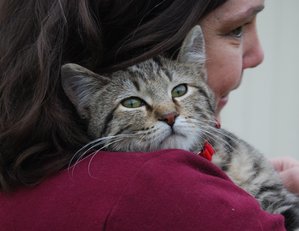 So, that is an animal guardian? In my view, these are people who are focused enough on animals to know when they need help, are willing to help those animals in need and who believe that they are used as instruments as part of a bigger plan to help certain animals. If you view yourself as an animal guardian, you may be nodding by now, thinking back to all of the times that an animal crossed your path or entered your life inexplicably, not to become a member of your family, but so that you could be used as an instrument to help that animal. Most people in animal rescue are eternal guardians and may feel like animal magnets. Something that happened to a friend recently served to reinforce my belief about her status as an animal guardian and I thought it worth sharing her story. Shelley was staying at a the Harrah’s in Reno for the holidays over the Christmas Eve/Christmas Day weekend. She and her family had taken the train to Reno with her mom for a holiday trip in 2015 and they decided to go for a memorial trip in 2016 after her mom passed away. It was a way to honor her mom and get through that first holiday season without her. It was cold. Seventeen degrees to be exact. Shelley and her family were coming back from dinner on Christmas Eve when they saw a young cat run around the long entry to the hotel, crying. The cat was obviously trying to get someone’s attention. Shelley and some others did their best to get the cat, feeding it chicken at one point to distract it. They had no luck at all. Shelley stayed up most of the night revisiting the entrance trying to get the cat but with all of the foot traffic, it was impossible. When she got up at 4:00 on Christmas morning, the cat was nowhere to be found. They were scheduled to leave Reno at 8:00 a.m. Shelley called a local rescue group and left a voice mail to explain the situation and to ask them for help, only to get a text later that day saying there was nothing they could do and to contact animal control. Shelly was despondent, later telling me, "you know what it’s like, one of those situations that you cannot help, and that will haunt you forever." But all was not lost. Shelley told me about her "Harrah’s kitty." Reno? I have contacts there. I checked in with Diane Blankenburg of Humane Network whom I know from my no kill advocacy. Diane was the Community Programs and Development Director of Nevada Humane Society in Reno for years up until 2013. I was sure there was something which could be done. I asked Diane if there wasn’t some way that the NHS could help refer Shelley to a local organization which does TNR (trap, neuter, return) in the city. (Much like other "entertainment" cities like Las Vegas, Reno has a large population of free roaming cats who live in certain areas due to the resources they find there.) Diane said she was sure NHS still had a TNR program. She connected with Denise Stevens, the Chief Operating Officer at NHS to explain about the cat. Denise was gracious enough to contact Harrah’s security staff about the cat and was told that the talkative little cat had been taken to Washoe County Animal Services (which shares a building with NHS). The Harrah’s cat was safe. He was transferred to NHS from animal control and was temporarily named "Feral Tune" due to his propensity to talk. We’re waiting on an update now about his condition. Looking at what happened over a period of days, the outcome was surely improbable. What are the odds that a single cat seen at a very busy hotel in a very busy city would be helped over a holiday weekend? Surely lots of other people saw and heard the cat. Shelley was worried for days, not knowing the outcome and fearing the worst. She felt responsible in some way. But she also underestimated her role as an animal guardian. This is not the first time an animal in need found Shelley and it won’t be the last. I have no doubt that Shelley saw Feral Tune so she would seek help and set a series of events in motion which would ultimately confirm the lost cat was safe. California + Nevada + Alabama = a saved cat. As it was surely meant to be. NOTE: If you think you are an animal guardian, I cannot encourage you strongly enough to educate yourself about some basic issues regarding companion animals and to connect with local animal shelters and rescue groups so that you have a plan in place in the event that an animal in need finds you. Be prepared for your next guardian encounter and be prepared to see the situation through to the point where the animal is placed in a new home or with a reputable organization. In short, be prepared to "own" your guardian status. It is not enough to by sympathetic to animals in need; you have to be prepared to actually help them in a direct and meaningful way to the extent you can. Please also do not assume that any animal you help is unwanted or was abandoned. Pets go missing very day for a host of reasons and not all of them relate to someone's irresponsibility. If you find a lost animal, report that fact to your local animal control personnel and list the pet on Helping Lost Pets. Every municipality has a "property hold period" so people can reclaim a lost pet. The best outcome for most lost pets is simply to get back home where they belong with people who care about them. (image of Tashi courtesy of Becky Lynn Tegze; image of Feral Tune courtesy of the Nevada Humane Society)
 In the years since I had my unwelcome epiphany about the plight of shelter animals – which led to greater awareness about a host of issues concerning companion animals in general – I have had the privilege of connecting with people across the country whom I consider trailblazers for the sake of animals. If you are new to the topic of animal welfare, you may not know their names. I call them Nathan and Mike and Theresa and Rudi and Dan and Mary and Ryan and Tamira and Davyd and Becky and Brian and Valerie and Debi and Terri and Kathy and Christie and Doug and Bett and Karen and Keith. All are very active related to the topics of no kill animal sheltering and ending puppy mills and ending the chaining/tethering of dogs and getting lost dogs back home and TNR of community cats and ending breed stereotypes and bans. What all of these contacts of mine have in common is that they don’t work for large national animal welfare organizations. Some of them manage nonprofit organizations, but most of them work full-time jobs and aren’t paid a dime for their advocacy. It is something they do because they are compelled to take action to improve our society and improve the welfare of the dogs and cats we say we value and care for. They act because they have to and it is part of who they are as people. I get a lot of email from people in other states about a variety of issues due to my outspokenness. Many want to know how to bring about change in their own areas and really don’t know where to start. Most have put some reliance on large national organizations to bring about change and have been left disappointed in that process. They ask, “what could I possibly do as one person? How can I possibly make things better related to _____________ (fill in the blank on the topic) in my city or my state?” I think that for most of us, the idea of taking on an issue ourselves is pretty daunting. We know we want to help, but may feel overwhelmed at the work we see before us to bring about change. The problems just seem so – to use an overused word – HUGE. Take heart, animal advocate. Because you do have the power to bring about change and your voice is louder than you may imagine. You do need to educate yourself on your topic. An informed advocate is an effective advocate. But speaking out on your own can be of more value than you may realize in your current state of mind.  I was reminded of this recently while reading a book written by a contact of mine named Becky Monroe called Bark Until Heard: Among the Silenced Dogs I Found My Voice. Becky and I just recently connected on the topic of puppy mills as a result of one of my earlier blogs on the topic. I have yet to blog about her book, but the reasons she wrote her book got me thinking about this whole topic of advocacy by individual people. Without taking away from your enjoyment of Bark Until Heard, the premise is pretty simple: Becky ended up at a puppy mill auction somewhat unexpectedly, saved a dog she named Thorp and was forever changed by the process, making it part of her life’s purpose to educate others about the horrors of the puppy mill industry in an effort to bring an end to it. I’m sure when Becky started what could be described as a crusade to end puppy mills, she had no idea how successful she would be. But that didn’t matter to her. She connected with like-minded people, she sent emails and composed letters, she wrote articles which helped people get a glimpse of what she had experienced and now she has a very successful book she is using as a means to reach more of the public. She truly did find her voice. 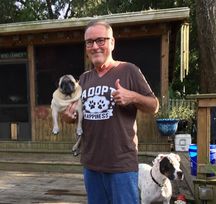 I was also reminded of this recently while engaging with fellow advocate Steve Shank of Lake County, Florida. Steve has been working for years to shine a light on the dark corners of the house that is animal sheltering in his county. He has been met with opposition, resistance and most recently what I would consider at best deception and at worst lies by the current shelter leadership to make things seem better than they are. Steve is just one person. But he did not give up and he stayed true to his vision. He ultimately connected with a county commissioner who got on board with his goals right away and in just a couple of weeks, a no kill consultant will be traveling to his county to meet with local officials and talk about plans for the county to run a no kill animal shelter using progressive and proven programs. I am sure that much like Becky, Steve had no clue where all this would go when he decided to take the risk of being the one to speak out for the animals who could not speak for themselves. The future of Lake County is still unfolding, but I’m sure we can all agree that there are many changes ahead and that the animals in that area are soon to be safer than at any time in the history of the county. Steve and his contacts will face opposition from a host of sources which will surprise many people. PETA, local rescuers and general naysayers will say that no kill is not possible or it means institutionalized hoarding or it costs too much. The problem with the pushback like that is that it seldom survives the reality of communities which change drastically and in very short periods of time. It’s hard to say the world is flat or we didn’t go to the moon or no kill communities are not real when they continue to emerge with increasing speed. Being a voice for animals is hard work. It may cause you to lose what you thought were friendships. It may baffle the people you love who are closest to you who support you, but who may not truly understand the depth of your commitment to bring about change. It may cause you to be vilified by organizations or individuals as they defend the status quo and focus more on the messenger than on the reasons why the message was necessary in the first place. But never doubt the power of individual advocacy related to companion animals whether it is on a general topic or whether is it focused on a state or municipality which is using tax dollars related to animals in ways which are not consistent with our culture and our values in America. Sometimes all it takes is one person putting themselves “out there” to help others find the courage to do the same. Which means that instead of being an army of one, you may find that you are one of many as you work together to change our society and help many more animals than you may ever realize. To borrow a lyric from Sara Bareilles, show me how big your brave is. (images courtesy of Becky Monroe and Steve and Hank Shank)
|
AuthorI am an animal welfare advocate. My goal is to help people understand some basic issues related to companion animals in America. Awareness leads to education leads to action leads to change. Archives
July 2024
Categories
All
image courtesy of Terrah Johnson
|

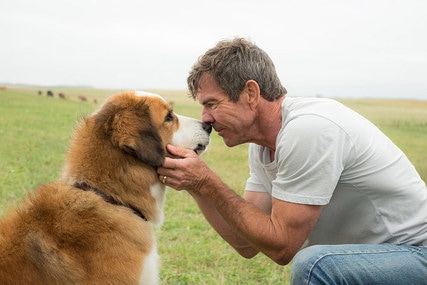
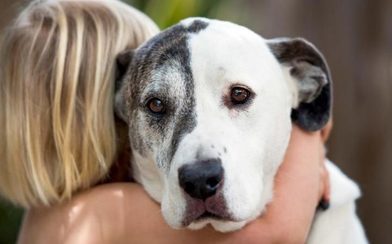


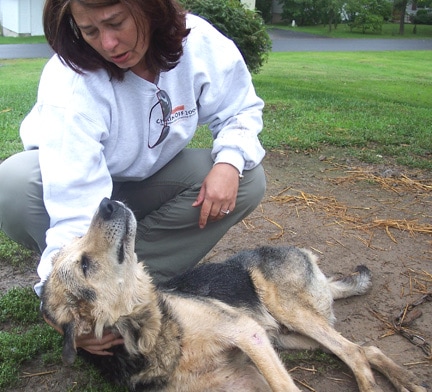
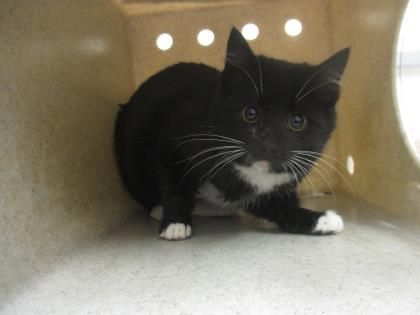
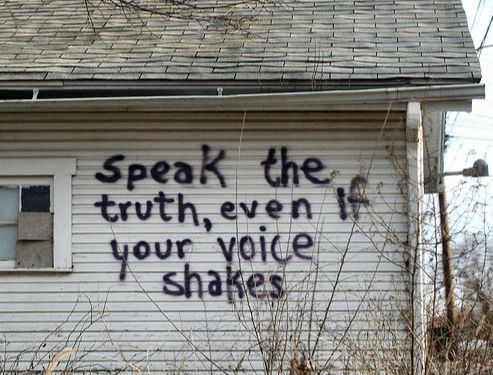
 RSS Feed
RSS Feed